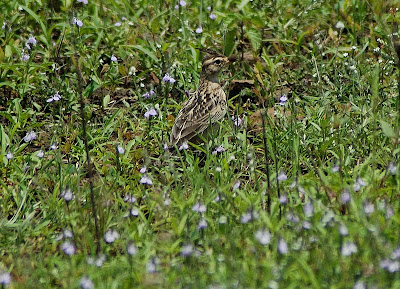510Ltd ends here where as there are a lot of NMMT bus going there mainly those going to kalyan.
Three of us (Julius, Mr Das and myself) started in Julius's car at around 7am from Airoli.
This is a fantastic place with hills on three sides.
Mahape landscape

Mahape hills seen with Julius and Mr Das in the foreground searching for flowers and caterpillars on the ground :-)

An interesting looking insects on a plant mostly Kala kuda on the hill slopes of Mahape.
These had some hairy looking substance on its back. There were around 20-25 of these.
The green part were wing like structures as it was flapping it.


Another interesting insects. They looked like spider at the first sight but they had antlers.

Black coloured moth caterpillars

Caterpillar of the small blue


Pupa of the above caterpillar

Food plant of the small blue
(mostly depending on id of above caterpillar)

Small blue butterfly

Paddy field pipit

One of the Mallow family flower (the family to which wild bhindi belongs)

Common Immigrant life stages
One of the caterpillars on the left bottom side is just pupating.
The plant is the food plant of the common immigrant.

A beautiful day flying Moth

Grass Yellow Caterpillar

Lichen growing on a rock

Eggs of some insect or vasp

Unknown bug
But it was very huge and it was looking wonderful

A stick insect

Caterpillar of an unknown moth

















































